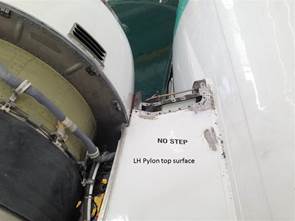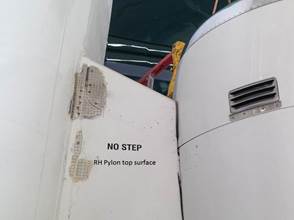

Paying attention to the upper forward top skins of both the LH and RH pylons can save you time and money during the long term. This area just aft and inboard of the pylon leading edge is prone to ramp standing water and is a "hot spot" for corrosion.
Keeping this area well protected with paint or even catching small areas of corrosion early prevents costly repairs during the "C" check.
Important Inspection: Potential Corrosion Risk Near Falcon 900 Baggage Door Motor
Peace of Mind Beyond OEM Warranty: Why CASP is the Smart Choice for Avionics Protection
Falcon 2000EX Series: Service Bulletin Addresses 5G Radio Altimeter Interference Risks
Honeywell TFE731 N2 Monopole Improvement: SB Updates & Troubleshooting
Aircraft Engine Low Utilization Inspections (LUI): When They're Really Due